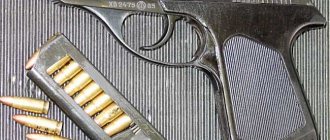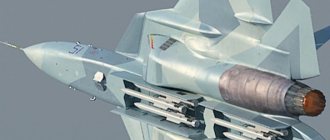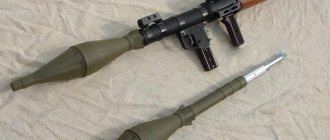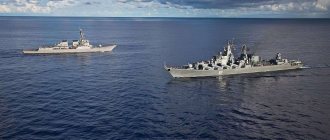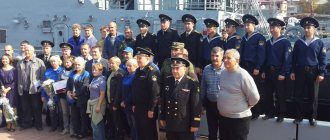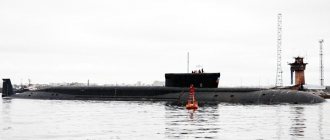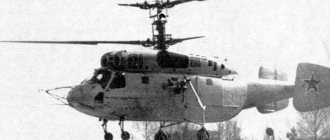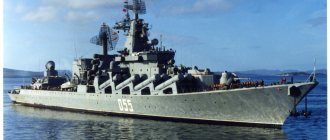| Bditelny class patrol ships (projects 1135, 1135M, 1135.1) | |
| "Zadorny" June 1, 1988 in the Mediterranean Sea. | |
| Project | |
| A country |
|
| Manufacturers |
|
| Operators |
|
| Previous type | BOD projects 1134-A and 1134-B |
| Subsequent type | BOD project 1155 |
| Years of construction | since 1968 |
| Years in service | since 1970 |
| Built | 48 |
| Under construction | 4 |
| In service | 14 |
| In conservation | 1 |
| Canceled | 2 |
| Main characteristics | |
| Displacement | 2835 (standard), 3190 t (full) |
| Length | 113.0 m (by waterline), 123.0 m (maximum) |
| Width | 13.2 m (according to the vertical line), 14.2 m (maximum) |
| Draft | 4.51 m (average) |
| Engines | 2 afterburning gas turbine engines DK59 (36,000 hp) or DT59 (45,400 hp), 2 sustainer gas turbine engines M-62 (10,000 hp), or DS71 (18,000 hp) |
| Power | 45,000—63,000 l. With. |
| Mover | 2 propellers |
| Travel speed | 32 knots (full), 14 knots (economic) |
| Cruising range | 3950 miles at 14 knots |
| Sailing autonomy | 30 days (according to provisions) |
| Crew | 191 people (including 22 officers) |
| Armament | |
| Radar weapons | Air and surface target detection radar "Angara-A" (MR-310A), fire control radar MR-105 "Turel", all-round sonar "Titan-2", towed sonar "Vega" |
| Electronic weapons | BIUS "Requirement-M" of the REP system: 4 × 82 mm PK-16 or 2 × PK-16 and 8 × PK-10 |
| Artillery | 2 × 2 - 76 mm AK-726 (1600 rounds), on Project 1135M ships: 2 × 1 - 100 mm AK-100 (400 rounds) |
| Missile weapons | 1 × PLURK "Rastrub-B" (since 1986)[3], on ships of project 11352 instead of RBU-6000 the Uran anti-aircraft missile system is installed, 2 × "Osa-M" (40 missiles) |
| Anti-submarine weapons | 2 × 213 mm RBU-6000 (96 RGB-60) |
| Mine and torpedo weapons | 2 × 4-tube 533 mm ChTA-53-1135 (8 53-65K or SET-65 torpedoes) |
| Aviation group | on ships of projects 11351, 11356 and 11356R/M (11357) : 1 × Ka-27/27PS or Ka-28 or Ka-31 |
| Images on Wikimedia Commons | |
Project 1135 patrol ships
(code “Burevestnik”, according to NATO codification -
Krivak I, II, III
) - a type of patrol ships (SKR), since 1970, in service with the USSR Navy and since 1991 - in service with the Navy of the Russian Federation and Ukrainian Naval Forces.
The lead ship of the series is Vigilant. Until 1977, they were classified as large anti-submarine ships (LAS).
Missile cruiser Varyag - video
https://youtube.com/watch?v=TpXChLPhOEs
During this period, the Vulcan anti-aircraft missile system and the Fort air defense missile system were successfully fired (when firing the latter, for example, three low-flying targets were shot down simultaneously by three missiles). In 1993-1994 Due to lack of funding, the ship did not go to sea. In 1995, Varyag resumed combat training. From 02/3 to 02/19/1997, the cruiser undertook a cruise to the shores of Korea and paid a friendly visit to the port of Incheon (formerly Chemulpo, South Korea), from 09/29 to 10/6/1999, together with the EM Burny (project 956) - the port of Shanghai (PRC), from October 1 to October 24, 2002 - the port of Yokosuka (Japan), and from February 10 to February 15, 2004, together with the military-industrial complex Admiral Tribune (project 1155) and MPK Koreets (project 1155). 1124M) - Incheon port. In 2005, at the Dalzavod shipyard (Vladivostok), the ship was put under medium repair and modernization associated with the replacement of the Fort air defense system with the Fort-M complex and the standard control system at the Forum radar system, instead of the Osa-MA air defense system. should install the Gyurza air defense system, and instead of the 30-mm AK-630M AU, three combat modules of the Kortik air defense system.
History of construction[edit | edit code]
The construction of the ships of the series was carried out at three shipyards (Shipyard named after A. A. Zhdanov (Leningrad); Shipyard "Yantar" (Kaliningrad); Shipyard "Zaliv" (Kerch) in three main modifications - projects 1135 (21 units, 1968-1981 ), 1135M (11 units, 1973-1981) and 11351 (in the version of the border patrol ship, 7 units, 1981-1990), differing in displacement and armament.
A total of 32 ships were built: according to project 1135, 21 ships were built until 1981 and another one was planned, but was not laid down; Since 1975, in parallel with the basic project, ships of the modernized Project 1135M were built; 11 hulls were built. In addition, Project 1135 became the basis for the design of the border patrol ship of Project 11351 code "Nereus".
In 1999-2013, under Project 11356, six Talvar-class frigates of Project 11356 were built and delivered for the Indian Navy; since 2010, a program has been implemented to build six frigates of the updated Project 11356R for the Russian Navy. The main differences between Project 11356R frigates and their export counterparts are their domestically manufactured weapons and updated elements of stealth technology.
Modifications[edit | edit code]
The request for "Project 11351 patrol ships" is redirected here. A separate article should be created on this topic.
In 1983-1984, the Zharkiy patrol ship was modernized according to project 11353 at the shipyard named after. A. A. Zhdanov with the placement of the new Zvezda-MG SJSC for testing. At the same time, its standard displacement increased by more than 350 tons.
In 1983, Project 11352 was developed with deployment on ships of the Uran anti-ship missile system. However, its implementation, due to delays in the creation of a new generation of tactical anti-ship missiles, was delayed until the early 1990s. Before the collapse of the USSR and the massive reduction of the Navy, it was possible to modernize only two ships: Leningradsky Komsomolets and Ardent. On them, instead of the removed RBU-6000, two quad Uran anti-ship missile launchers were installed, instead of the Angara radar, a Fregat-MA was installed, and instead of the Titan-2 sonar, the Zvezda-MG sonar was installed. True, the ships that underwent modernization sailed without anti-ship missiles due to their unavailability (in the West they were called: Modified Krivak-I class).
- 1135
(
Krivak-I class
) - basic project "Burevestnik" - 1135M
(
Krivak-II class
) - modernization of project 1135 with a displacement of 3000 tons. Instead of the AK-726, 100 mm AK-100 with a “Lev” control radar were installed, the sonar was replaced with a “Titan-2T” - 11351
(
Krivak-III class
) - border patrol ship of the Nereus project. Instead of the PLUR complex, one 100 mm AK-100 AU was placed; instead of the entire aft weapon complex, a runway with a hangar for a helicopter and 30 mm AK-630 assault rifles with a Vympel control radar were placed. A new underwater GAS “Platina-S” and a towed GAS “Bronza” were also deployed. - 11352
(
Modified Krivak-I class
) - modernization of project 1135. Replaced RBU-6000 with Uran anti-ship missile system, Angara radar with Fregat-MA, Titan-2 GAS with Titan-2T GAS. - 11353
(
Modified Krivak-I class
) - modernization of project 11352 with a displacement of 3150 tons. Replaced the GAK with the Zvezda-MG. - 11356
- export project of a Talwar-class frigate for the Indian Navy based on 1135. - 11356R
[5][6] - a frigate project for the Russian Navy based on the export project of a frigate for the Indian Navy of Project 11356 of the Talvar type.
Evaluation of Project 1135 “Burevestnik”[edit | edit code]
Project 1135 patrol ships in the USSR Navy were the most successful and truly became the main anti-submarine ships of the fleets and the main surface ships in combat service. These ships combined high seaworthiness and autonomous navigation, a high level of crew habitability, powerful anti-submarine weapons and good air defense for their class. At the same time, they had a number of serious shortcomings, the main of which were: the lack of a permanently based ship-borne helicopter, the lack of small anti-aircraft artillery for self-defense against cruise missiles, the short range of firing at surface targets with 85RU missiles, the lack of medium-range air defense systems. Compared to foreign counterparts of their time, Project 1135 patrol ships were the best in the world, surpassing the US Navy frigates of the Knox and Oliver Hazard Perry class. The latest modifications of this project, frigates 11356R, corrected all the shortcomings of this truly historic project for the Navy of the USSR and Russia, and laid the basis for the creation of modern multi-purpose frigates of project 22350.
Representatives of project 1135 “Burevestnik”[edit | edit code]
| Name | b/n | Manufacturer | Head No. | Pawned | Lowered | In service | Fleet | Decommissioned | Note |
| "Vigilant" | Shipyard "Yantar" (Kaliningrad) | 151 | 21.07.1968 | 28.03.1970 | 31.12.1970 | 31.07.1996 | |||
| "Cheerful" | Shipyard "Yantar" | 152 | 15.01.1969 | 28.04.1971 | 31.12.1971 | 17.07.1997 | |||
| "Worthy" | Shipyard "Zaliv" (Kerch) | 11 | 11.08.1969 | 08.05.1971 | 31.12.1971 | 30.06.1993 | |||
| "Ferocious" | Shipyard "Yantar" | 153 | 15.06.1970 | 27.01.1971 | 29.12.1972 | 30.06.1993 | |||
| "Strong" | 754 | Shipyard "Yantar" | 154 | 15.03.1971 | 29.08.1972 | 30.06.1973 | 30.06.1994 | ||
| "Valiant" | Shipyard "Zaliv" | 12 | 30.11.1970 | 22.02.1973 | 28.12.1973 | 03.06.1993 | |||
| "Watchman" | Shipyard "Yantar" | 155 | 20.06.1972 | 21.03.1973 | 30.12.1973 | , Pacific Fleet | 10.04.2002 | ||
| "Reasonable" | Shipyard "Yantar" | 156 | 26.06.1972 | 20.07.1973 | 30.09.1974 | Pacific Fleet | 16.03.1998 | ||
| "Smashing" | Shipyard "Yantar" | 157 | 28.09.1972 | 22.07.1974 | 30.12.1974 | Pacific Fleet | 29.10.1992 | ||
| "Friendly" | 754 | Shipyard "Yantar" | 158 | 12.10.1973 | 22.01.1975 | 30.09.1975 | 10.10.2002 | Dismantled in 2020 | |
| "Active" | Shipyard "Zaliv" | 13 | 21.06.1972 | 05.04.1975 | 25.12.1975 | 10.07.1995 | |||
| "Zealous" | Shipyard named after A. A. Zhdanov (Leningrad) | 712 | 12.06.1974 | 14.08.1976 | 28.12.1976 | Pacific Fleet | 04.08.1995 | ||
| "Selfless" | Shipyard "Zaliv" | 14 | 28.05.1976 | 07.05.1977 | 30.12.1977 | 29.11.2000 | "Dnipropetrovsk" in the Ukrainian Navy | ||
| "Provocative" | Shipyard named after A. A. Zhdanov | 716 | 10.11.1977 | 23.03.1979 | 31.08.1979 | 03.12.2005 | |||
| "Immaculate" | Shipyard "Zaliv" | 15 | 12.07.1978 | 03.06.1979 | 29.12.1979 | 29.11.2000 | "Mikolaiv" in the Ukrainian Navy | ||
| "Okay" | 861 | Shipyard "Zaliv" | 16 | 25.05.1979 | 07.05.1980 | 29.12.1980 | Under repair | ||
| "Gusty" | Shipyard "Zaliv" | 17 | 21.05.1980 | 16.05.1981 | 29.12.1981 | Pacific Fleet | 05.07.1994 | Burnt out in a fire at SRZ-178 in Zolotoy Rog Bay |
Representatives of the 1135M Burevestnik project[edit | edit code]
| Name | b/n | Manufacturer | Head No. | Pawned | Lowered | In service | Fleet | Decommissioned | Note |
| "Frisky" | Shipyard "Yantar" (Kaliningrad) | 159 | 10.12.1973 | 30.05.1975 | 30.12.1975 | 03.05.2001 | |||
| "Cutting" | Shipyard "Yantar" | 160 | 28.07.1974 | 17.02.1976 | 30.09.1976 | Pacific Fleet | 04.08.1995 | ||
| "Striking" | Shipyard "Yantar" | 161 | 11.02.1975 | 01.07.1976 | 31.12.1976 | 30.11.2004 | "Sevastopol" in the Ukrainian Navy | ||
| "Threatening" | Shipyard "Yantar" | 162 | 04.05.1975 | 07.02.1977 | 30.09.1977 | Pacific Fleet | 13.02.1995 | ||
| "Indomitable" | Shipyard "Yantar" | 163 | 22.01.1976 | 07.09.1977 | 30.12.1977 | 01.07.2009 | Burnt out in 2008. Sank 11/5/12 in Baltiysk, scrapped | ||
| "Loud" | Shipyard "Yantar" | 164 | 23.06.1976 | 11.04.1978 | 30.09.1978 | 16.03.1998 | |||
| "Permanent" | Shipyard "Yantar" | 165 | 11.01.1977 | 09.08.1978 | 26.12.1978 | 16.03.1998 | |||
| "Proud" | Shipyard "Yantar" | 166 | 26.07.1977 | 03.05.1979 | 20.09.1979 | Pacific Fleet | 05.06.1994 | ||
| "Zealous" | Shipyard "Yantar" | 167 | 01.03.1978 | 01.09.1979 | 31.12.1979 | Pacific Fleet | 17.07.1997 | ||
| "Zealous" | Shipyard "Yantar" | 168 | 01.03.1978 | 01.09.1979 | 31.12.1979 | Pacific Fleet | 24.07.2003 | ||
| "Inquisitive" | 868 | Shipyard "Yantar" | 169 | 27.06.1979 | 16.04.1981 | 30.11.1981 | In service |
Representatives of project 11351 "Nereus"[edit | edit code]
| Name | b/n | Manufacturer | Head No. | Pawned | Lowered | In service | Fleet | Decommissioned | Note |
| "Menzhinsky" | 056, 130 | Shipyard "Zaliv" (Kerch) | 201 | 14.08.1981 | 31.12.1982 | 29.12.1983 | PS FSB of Russia | 30.09.1998 | |
| "Dzerzhinsky" | 054, 158 | Shipyard "Zaliv" | 202 | 20.01.1983 | 02.03.1984 | 29.12.1984 | PS FSB of Russia | ||
| "Eagle" | 060, 156 | Shipyard "Zaliv" | 203 | 26.09.1983 | 02.11.1985 | 01.11.1986 | PS FSB of Russia | Until 01/17/1992 - “In the name of the XXVII Congress of the CPSU” | |
| "Pskov" | 100 | Shipyard "Zaliv" | 204 | 26.12.1985 | 18.02.1987 | 29.12.1987 | PS FSB of Russia | 23.03.2002 | Until 01/17/1992 - “In honor of the 70th anniversary of the Cheka-KGB” |
| "In honor of the 70th anniversary of the Border Troops" | 070,148 | Shipyard "Zaliv" | 205 | 02.04.1987 | 28.03.1988 | 30.12.1988 | PS FSB of Russia | 23.03.2002 | |
| "Kedrov" | 103, 110 | Shipyard "Zaliv" | 206 | 04.04.1988 | 30.04.1989 | 28.12.1989 | PS FSB of Russia | 23.03.2002 | |
| "Vorovsky" | 059, 160 | Shipyard "Zaliv" | 207 | 15.05.1989 | 28.07.1990 | 29.12.1990 | PS FSB of Russia | 19.09.2017 | |
| "Hetman Sahaidachny" | 201, U130 | Shipyard "Zaliv" | 208 | 05.10.1990 | 29.03.1992 | 02.04.1993 | Ukrainian Navy | When bookmarking "Kirov". Flagship of the Ukrainian Navy | |
| "Red pennant" | Shipyard "Zaliv" | 209 | 27.12.1992 | — | — | — | Dismantled in 1995 |
- Border patrol ship of the Coast Guard of the FSB of Russia "Vorovsky" (project 11351)
in Port Angeles[en] Clallam County - on the way to Seattle to participate in the North Pacific Coast Guard Forum[en] (2009).
Representatives of project 11352 “Burevestnik”[edit | edit code]
| Name | b/n | Manufacturer | Head No. | Pawned | Lowered | In service | Fleet | Decommissioned | Note |
| "Leningrad Komsomolets" | 257, 950, 991, 930 | Shipyard named after A. A. Zhdanov (Leningrad) | 713 | 22.04.1974 | 01.04.1977 | 29.09.1977 | 24.06.2003 | "Easy" from 02/15/1992 | |
| "Volatile" | Shipyard named after A. A. Zhdanov | 714 | 09.03.1977 | 19.03.1978 | 10.08.1978 | Pacific Fleet | 22.06.2005 | ||
| "Ardent" | 702 | Shipyard named after A. A. Zhdanov | 715 | 06.05.1977 | 20.08.1978 | 28.12.1978 | 12.10.2012 | Disposed of in 2019 |
Representatives of project 11353 “Burevestnik”[edit | edit code]
| Name | b/n | Manufacturer | Head No. | Pawned | Lowered | In service | Fleet | Decommissioned | Note |
| "Hot" | Shipyard named after A. A. Zhdanov (Leningrad) | 711 | 16.04.1974 | 03.11.1975 | 29.06.1976 | 10.10.2002 |
Representatives of project 11356 type "Talvar"[edit | edit code]
Main article: Talwar-class frigates
| Name | b/n | Manufacturer | Head No. | Pawned | Lowered | In service | Fleet | Decommissioned | Note |
| INS Talwar | F40 | Baltic Plant (St. Petersburg) | 301 | 10.03.1999 | 12.05.2000 | 03.2002 (Russia), 06.18.2003 (India) | Indian Navy | In service | "Dozorny" in the Russian Navy |
| INS Trishul | F43 | Baltic plant | 302 | 24.09.1999 | 24.10.2000 | 08.2002 (Russia), 06.25.2003 (India) | Indian Navy | In service | "Udarny" in the Russian Navy |
| INS Tabar | F44 | Baltic plant | 303 | 26.05.2000 | 25.05.2001 | 01.2004 (Russia), 04.19.2004 (India) | Indian Navy | In service | SKR-23 in the Russian Navy |
| INS Tag | F45 | Shipyard "Yantar" (Kaliningrad) | 01354 | 28.07.2007 | 27.10.2009 | 02.2004 (Russia), 04.27.2012 (India) | Indian Navy | In service[7] | |
| INS Tarkash | F46 | Shipyard "Yantar" | 01355 | 27.11.2007 | 23.06.2010 | 10.2012 (Russia), 09.11.2012 (India)[8] | Indian Navy | In service | |
| INS Trikand | F50 | Shipyard "Yantar" | 01356 | 12.06.2008 | 25.05.2011 | 04.2013 (Russia), 06.29.2013 (India)[9] | Indian Navy | In service |
Representatives of project 11356R “Burevestnik”
Main article: Project 11356 frigates
It is planned to build 6 units[5].
| Name | b/n | Manufacturer | Head No. | Pawned | Lowered | In service | Fleet | Note |
| "Admiral Grigorovich" | 494 | Shipyard "Yantar" (Kaliningrad) | 01357 | 18.12.2010[10] | 14.03.2014[11] | 11.03.2016 | In service[12] | |
| "Admiral Essen" | 490 | Shipyard "Yantar" | 01358 | 08.07.2011[13] | 07.11.2014[14] | 07.06.2016 | In service[15] | |
| "Admiral Makarov" | 499 | Shipyard "Yantar" | 01359 | 29.02.2012[16] | 02.09.2015[17] | 27.12.2017 | In service[18] | |
| "Admiral Butakov" | Shipyard "Yantar" | 01360/ 01457 | 12.07.2013[19] | 02.03.2016[20] | 12.2023 | Indian Navy[21] | Construction resumed in 2020[21] | |
| "Admiral Istomin" | Shipyard "Yantar" | 01361/ 01458 | 15.11.2013 | 11.2017[22] | 06.2024 | Indian Navy[21] | Construction resumed in 2020[21] | |
| "Admiral Kornilov" | Shipyard "Yantar" / Goa Shipyard Limited (GSL) | 01362 | 12.2013 | 11.2017[22] | 2024 | Indian Navy[21] | Being completed at the Goa Shipyard Limited (GSL) in India[21] |
Kyiv and Minsk - heavy aircraft-carrying cruisers of project 1143 and 1143.2
Sometimes the results were quite bizarre hybrids. The lead ship of Project 1143 “Krechet”, called “Kyiv”, laid down in 1970, was such a hybrid. Initially, the ship was classified as an “anti-submarine cruiser with aircraft weapons,” but since July 1975 it was already listed as a “heavy aircraft-carrying cruiser.”
The very idea of a “heavy aircraft-carrying cruiser” was excellent - possessing powerful anti-submarine and artillery weapons, the ship could effectively fight submarines and surface ships, and having its own air wing of vertical take-off and landing aircraft, no less effectively, could provide air cover for the group Soviet ships anywhere in the ocean.
However, the excellent idea was let down by technology. The vertical take-off aircraft available to the fleet, the Yak-38, were very limited in combat capabilities. Low speed, modest armament, lack of radar - all this did not allow them to be used as full-fledged fighters. And as a light attack aircraft, attacking a surface ship in a modern naval battle would mean a guaranteed loss of the aircraft. All hope was in the future - on full-fledged vertical take-off fighters Yak-141, but this prospect was by no means close - in the mid-1970s, only the name was ready from the Yak-141. At the same time, using the same "Kiev" as an anti-submarine ship , it would be too wasteful - the same project 1134B BODs mentioned above carried almost the same set of weapons, but at the same time they were almost five times inferior in displacement to the Krechet.
TAKR "Minsk" - laid down on December 28, 1972 at the Black Sea Shipyard in Nikolaev, launched on September 30, 1975, in service since September 27, 1978, decommissioned on June 30, 1993.
Drawing of the heavy aircraft-carrying cruiser "Kyiv"
Thus, the first “Gyrfalcons” of Project 1143 were rather strange warships: carrying too few aircraft for their displacement, they were, nevertheless, unnecessarily overloaded with other combat systems. All this would be quite tolerable if not for other shortcomings:
The size of the superstructure made it difficult for aircraft to fly, the high location of the ammunition magazines and aviation fuel tanks reduced the combat survivability of the ship, and the corner deck was flooded with water during heavy seas. But the main problem was not a rational system for heating the premises, because of which the constantly forming condensate destroyed the internal structures of the ship. In order to somehow combat this scourge, the power plant of the heavy aircraft-carrying cruiser “Kyiv” was forced to “thresh” around the clock, which naturally seriously reduced its resource.
TAKR "Novorossiysk" - laid down on September 30, 1975 at the Black Sea Shipyard in Nikolaev, launched on December 26, 1978, in service since August 14, 1982, decommissioned on June 30, 1993.
Project 1135 Burevestnik patrol ships (SKR)
The appearance of Project 1135 ships (code name “Burevestnik”) for the domestic fleet was a real breakthrough into the future. The project, developed by Soviet designers almost half a century ago, turned out to be so successful that modifications of it are still being built to this day.
For several decades, Soviet patrol ships (SKR) were actually destroyers - strike combat units in the near sea zone. However, the emergence of nuclear submarines with ballistic missiles in the United States forced the USSR to reconsider its priorities. Now the Soviet Navy was tasked with preventing a potential enemy from approaching its shores within the range of a missile salvo. Due to their small numbers, large anti-submarine ships (AMS) could not complete this task. A need arose for a new ship - seaworthy enough for independent operations in the ocean, but at the same time relatively inexpensive and suitable for large-scale construction.
PROJECT
The terms of reference for the development of Project 1135 SKR were issued in 1964. The designers had to create a truly innovative ship. New construction technology, widespread use of non-traditional structural materials (titanium and then fashionable aluminum-magnesium alloys), advanced automation and electronic warfare systems - these are just some of the innovations used in the project. The lead ship, named Vigilant, was laid down in Kaliningrad in June 1968. On December 31 (a date very typical for the era of a planned economy) 1970, it officially went into operation, although testing and delivery of various systems continued for several months. It is noteworthy that in its characteristics the lead “Burevestnik” was so different from its predecessors - SKR projects 50.35 and 159, that it was initially classified as a military-industrial complex. Only in 1977 were the ships of Project 1135 again reclassified as TFR, which is what they were designated as during their development.
Read: Project 1123 anti-submarine cruisers
DESCRIPTION
The all-welded hull of the Project 1135 ship had an extended forecastle and fundamentally new lines that ensured good seaworthiness. Inside, the hull was divided into 14 main waterproof compartments. The power plant was very original - two pairs of gas turbines, propulsion and afterburner, driving the shafts through gearboxes and tire-pneumatic couplings. All mechanisms had vibration-damping coatings and special shock absorbers. In addition, the ship's acoustic field was reduced by an underwater bubble camouflage system. As a result, the Burevestniki became the quietest ships of the Soviet Navy at that time. To carry out the main task - combating submarines - the Metel rocket torpedoes and very powerful hydroacoustic stations (GAS) were used: the underwater "Titan" and the towed "Vega". Compared to the prototype - the American ASROK system - the Metel anti-submarine complex had significantly better characteristics. The 85-R guided missile had a firing range of up to 50 km (ASROK - about 10 km).
The AT-2U torpedo was used as a warhead. She was dropped at a given point by parachute and, once in the water, moved in a spiral, gradually plunging deeper and deeper. The active homing system conducted a continuous search for the submarine all this time; as soon as the equipment captured the target, the torpedo was immediately aimed at it and increased its speed to 40 knots. Later, the 85-R missiles were replaced by the new 85-RU Rastrub missiles, which could also be used against surface targets.
Read: British tank landing ships - “Knights of the Round Table”
The artillery armament initially consisted of two twin 76-mm AK-726 gun mounts. Later, starting with the 22nd Corps, they were replaced by two more powerful 100-mm AK-100 universal guns with a new MP-145 “Lev” control system. The design of a ship with enhanced artillery armament was designated 1135M.
EXPLOITATION
Ships of this type were mass-produced at three factories from 1968 to 1981: in Kaliningrad, Leningrad and Kerch. In total, 32 units entered the Soviet Navy, including 11 of Project 1135M. It is significant that the sailors who served on the Burevestniks unanimously evaluate them exclusively on the positive side, noting the high reliability of the mechanisms, excellent seaworthiness and maneuverability, powerful weapons and advanced electronics. However, during the operation of the ships, their shortcomings were also revealed, the most important of which was the discrepancy between the range of the Metel anti-submarine missile system and hydroacoustic detection means. No matter how perfect the Titan and Vega sonar systems were, they still usually managed to establish reliable contact with a potential enemy submarine at a distance of 10-15 km, that is, several times less than the flight range of a rocket torpedo. This problem could be solved by a helicopter with appropriate search equipment, but it was impossible to place it on board the ship without a radical redesign of the project.
Read: Mosin rifles
MODERNIZATIONS
At the end of the 1980s, it was planned to carry out a deep modernization of the TFR: replace both sonar systems with the new generation Zvezda-M1 hydroacoustic complex, install the Fregat-MA radar, and instead of rocket launchers - two quad launchers of Uran anti-ship missiles. Before the collapse of the USSR, they managed to carry out work on only three ships, and even then on one of them (“Zharky”) - only partially, without replacing the radar and dismantling the control unit. “Burevestnik” became the progenitor of the family of border patrol ships of Project 11351 and multi-purpose frigates of Project 11356. The latter were built for the Indian Navy, and now serial construction of their modified version is underway for the Russian fleet. However, these ships deserve a separate story.
TACTICAL AND TECHNICAL CHARACTERISTICS. SKR "VIgilant" (PROJECT 1135)
- Displacement/t: - standard: 2835 - full: 3200
- Dimensions, m: - maximum length: 122.9 - maximum width: 14.2 - average draft: 7.2
- Power plant: gas turbine with a total capacity of 52,000 liters. With.
- Maximum speed, knots: 32 (59 km/h)
- Cruising range, miles: 4000 (at speed 14 knots)
- Armament: 4 Metel anti-aircraft missile launchers, 2 Osa air defense missile launchers (40 missiles), 2 x 76 mm AK-726 gun mounts, 2 x 533 mm torpedo tubes, 2 RBU-6000
- Crew, people: 192 (including 22 officers)
You might be interested:
- Patrol ships of projects 159 and 35
- Large anti-submarine ships of Project 61
- Project 1159 ships - patrol boats for export
- Project 1123 anti-submarine cruisers
- Project 062 patrol ships (Shanghai class)
- Large landing ship (LHD) project 775
Subscribe to
our channel in Yandex.Zen
Notes
- This facility is located on the territory of the Crimean Peninsula, most of which is the subject of territorial disputes between Russia, which controls the disputed territory, and Ukraine, within whose internationally recognized borders the disputed territory is located. According to the federal structure of Russia, on the disputed territory of Crimea there are constituent entities of the Russian Federation - the Republic of Crimea and the federal city of Sevastopol. According to the administrative division of Ukraine, on the disputed territory of Crimea there are regions of Ukraine - the Autonomous Republic of Crimea and the city with a special status of Sevastopol.
- ↑
- ↑
- Shipbuilding industry of Crimea - prospects for revival
- Error in footnotes?: Invalid tag; no text provided for footnotes
- Zaliv shipyard will purchase the shipbuilding assets from Bergen Group ASA (Norway) // JSC Shipyard Zaliv website
- . Retrieved February 20, 2020.
- . Retrieved February 20, 2020.
- (unavailable link). crimea vector
. Retrieved February 20, 2020.
- Elena Lesina.
. KerchINFO: news from Kerch and Crimea. Retrieved April 26, 2016.
- ↑
- ↑ (inaccessible link). fleetphoto.ru. Retrieved June 25, 2017.
Plant capacity
Shipbuilding has all the necessary equipment and technical capabilities that allow it to carry out a complex of shipbuilding and ship repair work at all stages of the production cycle.
Dry dock: length - 360 m width - 60 m height - 13.2 m. The dock is equipped with two GOLIATH cranes with a lifting capacity of 320 tons each, which makes it possible to form blocks weighing more than 600 tons and five portal cranes with a lifting capacity of 80 tons each, which ensure the production process. The dry dock can be divided into two parts, which allows it to be used as a single-chamber for large-tonnage vessels, or as a two-chamber, allowing for the construction (repair) of ships in two independent positions. The length of each dock chamber can be changed by moving the removable intermediate shutter into any of the four special slots provided for this purpose.
- Two horizontal slipways 400 m long with cranes: two of 80 tons each, three of 32 tons each and four of 16 tons each. Both lines have a common launching device - a transverse slipway, which ensures the launching of vessels weighing up to 2500 tons, where DWT vessels can be assembled up to 10,000 tons with restrictions on the width of the vessel.
- Hull processing production includes sections for pre-processing and thermal cutting of sheet metal, as well as a section for bending parts. The plant operates an automated line for pre-processing rolled sheets and profiles with the application of a preliminary protective layer. Metal cutting is carried out in an automated mode using thermal plasma cutting machines “Suprarex” SXE-P2 5500 (cutting speed up to 24 m/min (0.4 m/s).) and plasma machines “Crystal” and “Granat”. The production capacity of the hull processing shop is 60 thousand tons of steel per year.
- Shipyard Bay, harbor, view from the north. On the left is Kamysh-Burunskaya (Arshintsevskaya) spit
The assembly and welding production is equipped with crane equipment with a lifting capacity of up to 200 tons, as well as a TTS assembly and welding line for sections and blocks (Norway). The line ensures the production of 12x18 m panels weighing up to 100 tons, 18x24 m body blocks weighing up to 300 tons. The assembly and welding shop of the plant has a capacity of 60 thousand tons of metal structures per year.
- Pipe processing production: has all the necessary equipment to perform all the main operations for the manufacture of ship pipeline systems (painting and drying chamber, Schwarze-Robitec pipe bending complex for bending pipes from 42 to 220 mm Ø, TGSV-1/2 pipe bending machine, equipment for washing of pipes and hydraulic systems, as well as for checking pipes and hydraulic fittings, as well as a galvanizing section that allows hot-dip galvanizing of pipes and other parts with a capacity of up to 1200 t/year
- Zaliv's mechanical engineering production is represented by mechanical assembly and mechanical repair shops. The capacity of these workshops allows for the production of single products, hull saturation parts, components and parts of ship mechanical engineering, practical items, tools and special technological equipment for the shipbuilding production of the plant, premises equipment, etc.
- The painting production includes a full set of technological equipment that ensures that the requirements for corrosion protection at all stages of ship construction are met at the level of world standards, using modern paint and varnish materials. The total production capacity of the workshop is 41,000 m2 of painted surfaces of standard ship structures
- The completion of ships after launching is carried out at two deep-water berths equipped with crane equipment: two - 32 tons, one - 50 tons and one - 80 tons. The plant has the necessary equipment and professional skills to carry out a range of outfitting works (installation of equipment, electrical equipment and electrical routes, ship equipment and practical things, performing insulation and plating of pipes and hulls, conducting control tests of compartments and premises for impermeability and tightness, conducting mooring and sea trials, etc.)
Performance characteristics of the missile cruiser Varyag
Displacement………………………11,490 t
Overall dimensions of the cruiser Varyag
Length……………………186.4 m Width…………………20.8 m Height…………………42.5 m (midship) Draft……………………… 8.4 m
Engines of the cruiser Varyag
Power…………………4 × 22,500 l. c.Speed……………………32 knots, economical 16 knotsNavigation range………………………7500 nautical milesNavigation endurance………………………30 daysCrew………………………480 Human
Armament of the cruiser Varyag
Artillery……………………1 × 2 AK-130 Anti-aircraft artillery……………………6 AK-630 missile launchers………………………16 anti-aircraft missile launchers (P-1000 “Vulcan”), 64 launchers of the S-300F “Reef” air defense system, 2 × 2 “Osa-MA” air defense systems Anti-submarine weapons…………………2 RBU-6000 Mine and torpedo weapons…………………2 five-tube 533 mm torpedo tubes apparatusAviation group…………………1 Ka-27 helicopter
Design history[edit | edit code]
The bulk of the "Selfless" on the US cruiser Yorktown
Border TFR “Named after the XXVII Congress of the CPSU” (then “Eagle”), naval units of the border troops, March 1, 1987
Project 1135 was developed in 1964-1966 at the Northern Design Bureau. In accordance with the terms of reference, the leadership of the USSR Navy planned to receive a large anti-submarine ship of rank II - an ocean-going ship based on projects 1134-A and 1134-B, but with a significantly reduced displacement. The new project was supposed to solve a wide range of tasks for anti-submarine and air defense of ship formations, and be capable of conducting convoys through areas of local combat operations.
The reduction in displacement led to the abandonment of the helicopter; the hydroacoustic equipment was identical to the 1134-B project, but insufficient to fire main-caliber missiles at full range, so the ships were supposed to operate in search-and-strike pairs.
Initially, the ship's main armament was the Metel missile-torpedo system, designed to destroy submarines. During modernizations, it was replaced by the Rastrub-B, which was also capable of hitting surface targets.
Notes[edit | edit code]
- Apalkov, 2005, p. 89.
- Bishop, 1999, p. 37.
- According to some sources, the BOD’s anti-submarine weapons initially consisted of the Metel anti-submarine missile systems, which were replaced by the Rastrub-B anti-submarine missile systems during the modernization process [1], according to other sources, from 1970 to 1981, the anti-submarine missile containers were empty, the ships sailed without the main weapon. This fact, however, was hidden from NATO intelligence[2].
- The new look of the Russian Navy: a course towards unification and standardization
- ↑ 12
10/27/11 The increase in purchases of frigates 1135.7 to 6 units is due to the need to further develop the concept of frigate 22350 - The British Phoenix will not be allowed on board the Russian frigate
- (unspecified)
was transferred to the Indian Navy (inaccessible link). Retrieved April 29, 2012. Archived March 9, 2020. - The command of the Baltic Fleet took part in the ceremony of handing over the ship to the Indian Navy
- The contract for the construction of three frigates for the Indian Navy has been completed | RIA News
- Frigates for the Black Sea Fleet will still be laid down this year (unspecified)
. www.flot.com (December 14, 2010). Retrieved December 12, 2010. - The patrol ship "Admiral Grigorovich" was launched in Kaliningrad. 14.3.2014
- St. Andrew's flag was raised on the new patrol ship "Admiral Grigorovich"
- The construction of a ship for the Russian Navy has begun (undefined)
(inaccessible link). Retrieved July 8, 2011. Archived January 28, 2012. - The frigate "Admiral Essen" moves to the pre-launch position. 15.4.2014
- The newest frigate "Admiral Essen" was transferred to the Russian Navy
- The fleet has a new frigate
- The newest frigate "Admiral Makarov" for the Black Sea Fleet was launched in Kaliningrad | RIA News
- Vadim Kolesnikov. The newest frigate “Admiral Makarov” was transferred to the Russian Ministry of Defense.
- The newest frigate for the Russian Navy will be laid down in Kaliningrad at the end of March (unspecified)
. Retrieved March 5, 2013. - The frigate "Admiral Butakov" was launched
- ↑ 1 2 3 4 5 6
The completion of Project 11356 frigates for the Indian Navy will begin in the first months of 2020
(unspecified)
. www.militarynews.ru. Retrieved December 13, 2020. - ↑ 1 2 2017-11-14 21:48:00 Kaliningradblog Kaliningradblog 2017-11-14 21:48:00 Kaliningradblogwrote.
OIS "Evgeniy Gorigledzhan" and other boxes on "Yantar" (English). kaliningradblog.livejournal.com. Retrieved December 13, 2018.
Literature
- Apalkov Yu. V.
Ships of the USSR Navy: Directory: in 4 volumes - St. Petersburg. : Galeya Print, 2005. - Vol. 3: Anti-submarine ships, Part 1: Anti-submarine cruisers, large anti-submarine and patrol ships. — 120, p., l. ill. : color ill. — ISBN 5-8172-0094-5. - Apalkov Yu. V.
Anti-submarine ships: . - M.: Morkniga, 2010. - P. 147. - 307, p., l. ill. : color ill. — 1000 copies. — ISBN 978-5-903080-99-1. - Vasiliev A.M. et al.
SPKB. 60 years with the fleet. - St. Petersburg: History of the ship, 2006. - ISBN 5-903152-01-5. - Firepower: Sea Warfare: / Horace Beck; Chris Bishop (ed.). — Orbis Publishing Ltd. - 1999. - ISBN 0-7858-1087-0. — ISBN 978-0785810872.
Service history
Project 1135 ships have left their mark on history:
- An anti-Soviet riot took place at the Storozhevoy TFR in 1975
- In 1988, the TFR "Selfless" attacked the American cruiser "Yorktown", displacing it from the territorial waters of the USSR.
As of 2012, several ships of projects 1135 and 1135M remained in the Russian Navy. A further evolution of Project 1135 patrol ships was the project of Talvar-class frigates (or Project 11356), built for the Indian Navy at the Northern Shipyard. Today (2013), a program is underway to build 3 ships of Project 11357 (an improved version of the export 1135.6 for the Indian Navy) for the Russian Black Sea Fleet, and there are also plans to build 2 additional units for the Russian Baltic Fleet. Project 11357 frigates should be unified with Project 22350 frigates in terms of equipment and main weapons systems, which will reduce the differences between them to a minimum.
